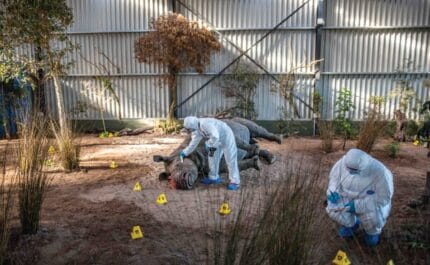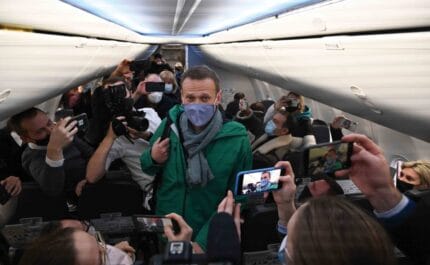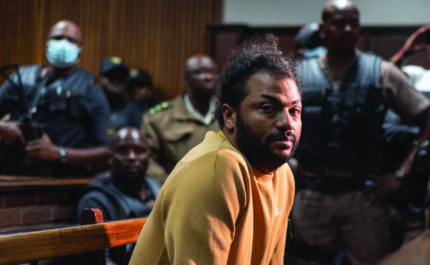Trepca means trouble
Almost two decades after the two were at war, Serbia’s bitter dispute with Kosovo again flared up in November 2016, as Serbia’s deputy prime minister denounced the Kosovar government to the UN Security Council as jeopardising the region’s uneasy peace. In October, James Montague visited the vast mining complex that lies at the heart of their quarrel, and found the tension on both sides was already rising to the surface…
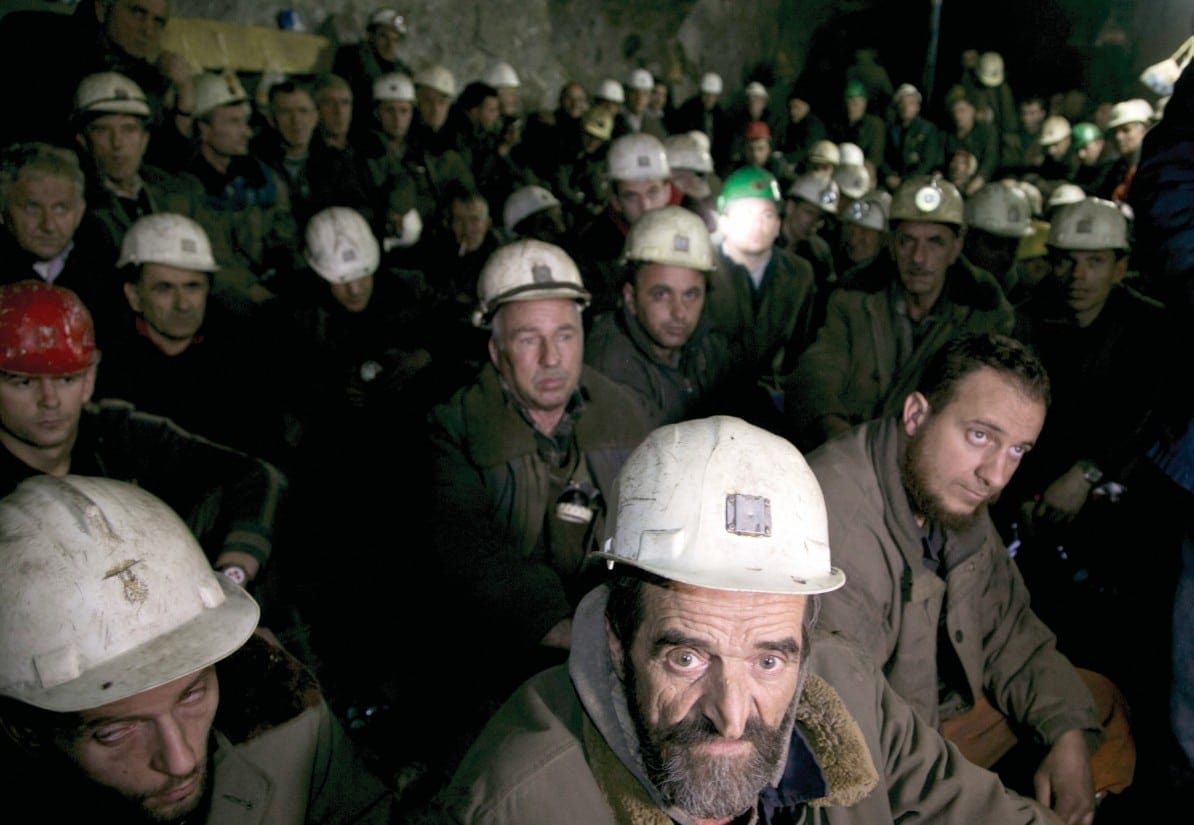
More than 400 miners occupy Stari Trg in January 2015, in support of Kosovo’s plans to nationalise the mine. Photo: Visar Kryeziu / AP / PA Images
18th November 2016 (Taken from: #25)
Stari Trg mine,
Trepca mining complex, northern Kosovo,
Tuesday 28th February 1989
The miners knew their battle was coming to an end. They lay listless and hungry in the dark on the floor of a narrow tunnel, 850 metres below the earth. The temperature hadn’t dropped below 50 degrees Celsius for seven long, punishing days and nights. And now the clean water was gone.
The Kosovar miners had called their underground strike as a protest at the treatment of their countrymen. Serbia’s nationalist leader, Slobodan Miloševic, was asserting historic Serbian claims over the autonomous province of Kosovo. Powers had been stripped from its capital, Priština, Kosovar politicians arrested and state workers purged.
As conditions in Kosovar society worsened under pressure from Belgrade, the miners believed that the Trepca mining complex was their strongest bargaining chip. It was Kosovo’s single most important asset, comprising 40 mines that contained billions of dollars’ worth of lead, iron, zinc, silver and gold and accounted for two thirds of Kosovo’s entire GDP. A strike would cripple Kosovo – but damage Belgrade too.
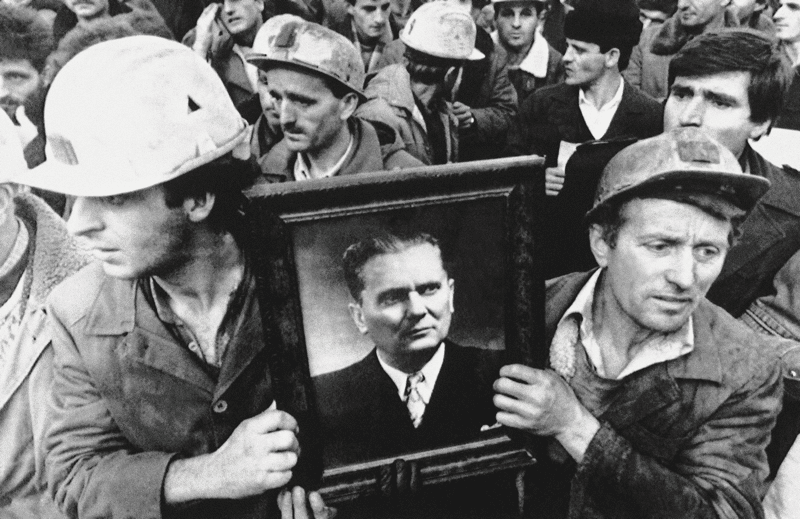
Miners carry a portrait of the late Marshal Tito in demonstrations in Priština, November 1988. Photo: Dusan Vranic / AP / PA Images
At the start of the protest, more than 1,300 miners had filled the sprawling network of tunnels at Trepca’s biggest mine, Stari Trg, but hundreds were carried out and rushed to hospital as the strike progressed. Now, as the eighth day began, only 50 remained, including young miner Ramadan Gjoshaj. In a few minutes, shortly after midnight, his protest would come to an end. Just as a special forces unit was preparing to rappel down the fire escape shafts to end the strike by force, an eleventh-hour deal was brokered in which the top political official in Kosovo, a pro-Miloševic stooge, would resign. The miners appeared to have won an unlikely victory and the end of the strike came as a relief. But as they emerged blinking into the fresh air of the surface, they were all arrested. Shortly afterwards the presidency of Yugoslavia announced a state of emergency in Kosovo.
A few years later, ethnic Albanian Kosovars and Serbians were engaged in a brutal war. For many, Trepca and its mineral wealth was the true reason for the conflict. “The war in Kosovo is about the mines, nothing else,” Trepca’s Serbian director, Novak Bjelic, told The New York Times in 1998. “This is Serbia’s Kuwait – the heart of Kosovo…”
Stari Trg mine,
October 2016
The entrance to the Stari Trg mine, scene of the 1989 strike, is a half-hour drive north of the Kosovar city of Mitrovica, up a steep hill, through a bone-dry forest of pine trees. Workers’ cars cluster at the front entrance, below a sign adorned with Trepca’s iconic emblem: two black, crossed coal hammers inside a green factory.
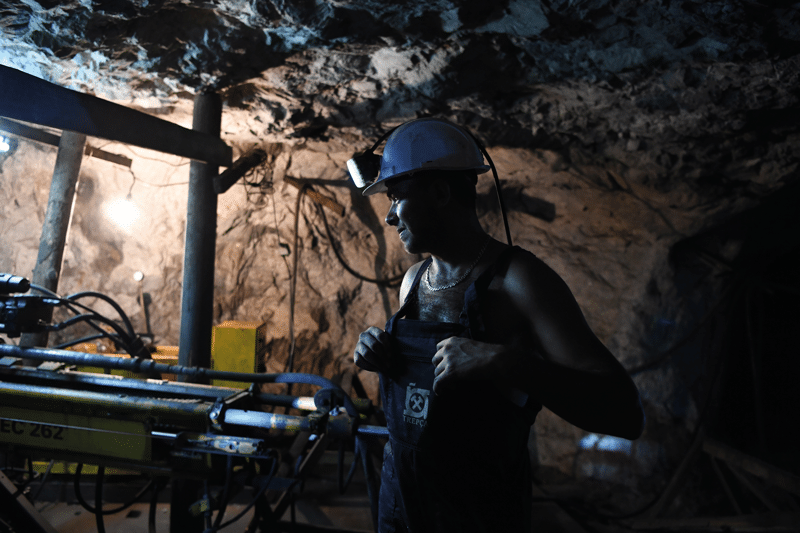
A Stari Trg miner displays the Trepca complex’s emblem on his overalls, October 2016. Photo: James Hill
Inside a decrepit reception building pitted with broken windows, the office of Qazim Jashari, Trepca’s director, is covered in technical drawings of mine shafts and geological maps. A display cabinet holds a dazzling array of rocks and minerals in a kaleidoscope of pinks, silvers and blues. “Since we first started in the 1930s until today, we have produced 37 million tonnes of lead, zinc, gold, silver and other rare elements,” he says proudly, somehow managing to talk history, smoke and answer his constantly ringing mobile and desk phones at the same time.
There are 200 kilometres of tunnels, he says, and 722 workers, barely three percent of the workforce once employed in Trepca’s mid-’70s heyday. “We had a huge industry, the finest product,” he says. “The most important thing is that we still have resources today, there is loads of ore.”
Such acts of Priština… are not in the interest of regional peace and stability”
It is this untapped wealth that has once again become the focus of a bitter dispute in the region, reviving memories of the war and even raising the spectre of renewed conflict. On 7th October 2016, Kosovo’s government voted to purchase the mine from a UN-held trust in order to save the operation from bankruptcy and place it under government control, provoking outraged protests from Belgrade. In November, Serbian deputy prime minister Ivica Dacic addressed the UN Security Council and denounced the move to nationalise Trepca. “Such acts of Priština, inaugurating an atmosphere of unilateral imposition, fait accompli and ultimatum… are not in the interest of regional peace and stability,” he said.
The confrontation is no surprise. The wealth found in Trepca’s ore – Jashari believes that as much as 50 million tonnes of extractable minerals are still down there – has long brought instability as well as prosperity to Mitrovica, Kosovo and the wider region.
In 1974 Yugoslavia’s communist leader, Josip Broz Tito, announced that Kosovo would be an autonomous province of Serbia, giving it a large degree of independence from its ruling Serbian republic. Tito’s move was not popular in Belgrade, but it was welcomed by Kosovo’s 1.8 million ethnic Albanians, who were mainly Muslims and who greatly outnumbered its 200,000 Serbs, mostly Orthodox Christians.
At the time, the Trepca Mining and Metallurgic Complex, including its vital lead smelter in the village of Zvecan, employed as many as 25,000 people, bringing full employment and wealth to the population of Mitrovica. But Kosovo as a whole remained poor. Such was the inequality in wealth between Kosovo and the rest of Serbia that Kosovars had a phrase for how they viewed the distribution of their resources: “Trepca digs, Belgrade builds.”
Tito’s death in 1980 brought a rapidly deteriorating economic and political situation for Kosovo, quickened by the ascendancy of Miloševic in Belgrade. Miloševic feared Kosovo would declare full independence or seek to become part of Albania, and initiated a violent clampdown on anything he saw as dissent within the province.
The Clintons remain hugely popular among Kosovar Albanians – but they are widely despised in Serbia”
In this context the 1989 Trepca miners’ strike was a watershed moment. In its aftermath ethnic Albanians were purged from employment in every state sector. At Trepca itself almost all the ethnic Albanian miners and management staff were fired or left in protest. Jashari was fired too, and would not return for a decade.
The Serbian minority now controlled Kosovo’s wealth and institutions and the ethnic Albanians receded into the shadow economy and crippling unemployment, fostering a resentment that would help lead to war a decade later. It is estimated that Kosovo’s economy shrank by 70 percent between 1989 and 1999.
When war between Kosovo and Serbia arrived in 1998, the Kosovo Liberation Army, with huge assistance from Nato, pushed back the Serbian forces to create a de facto state, which has since been recognised by 115 nations. The contribution of Nato is saluted at the front door of the Stari Trg mine where, alongside Trepca’s iconic badge, there’s a faded picture of Hillary and Bill Clinton set into an outline map of Kosovo. The Clintons remain hugely popular among Kosovar Albanians, and a gold statue of Bill stands in the centre of Priština. The Clintons are widely despised in Serbia.

Photo: AP / PA Images
Eighteen years after the war ended, the city of Mitrovica still remains divided. Of the five percent of Kosovo’s population currently made up of ethnic Serbs, the vast majority live in the north around Mitrovica. The city is bisected by the Ibar River: to the south live Kosovar Albanians ruled from Priština. To the north, Kosovar Serbs hold sway: they are heavily subsidised by Belgrade and use only the Serbian dinar as currency. A detachment of Italian carabinieri seconded to KFOR – the UN force charged with keeping the peace – still patrols the main bridge that crosses the river, where traffic is banned. When tensions heat up between the two sides, groups of masked young men come to the bridge to hurl rocks at each other.

The bridge between ethnic-Albanian-dominated southern Mitrovica and the Serb-majority northern part of the city, April 2013.
Photo: Zveki / AP / PA Images
“Mitrovica needs Trepca,” says Jashari. The city today is poor and getting poorer on both sides, with unemployment as high as 75 per cent by some estimates. “There aren’t two Trepcas, north and south, but one,” he adds. “The part we need now is a law by the [Kosovo] parliament that will make Trepca work again. Then Trepca will be looking forward.”
At the entrance to the Stari Trg mine, just a few dozen men in blue overalls, hard hats and mine lamps are sitting quietly in the thin autumn sun, smoking and waiting for the signal to go down. A stone archway with heavy green metal doors is opened by the foreman: above the entrance the words “Me fat!” have been written in thick chalk: “Good luck!” in Albanian.
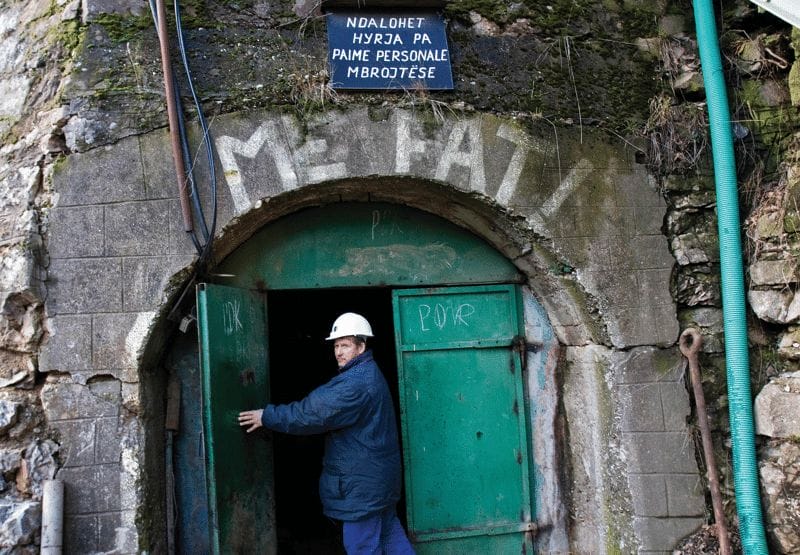
Photo: Visar Kryeziu / AP / PA Images
A handful of the miners are young men, but most are old-timers. Ramadan Gjoshaj holds his face to the sun, eyes closed, as he smokes. Gjoshaj is a Trepca veteran of 40 years. He is a foreman now but back in 1989 he was one of the final 50 strikers during the famous industrial action. “I think,” he says, stubbing out his cigarette under a heavy black boot, “we should talk about the strike when we reach the bottom.”
The heavy metal lift slides open its doors and fills with miners. A man squeezed into a tiny control room nearby curses at an ancient, glitchy board of switches and dials that emits a piercing buzz every few seconds as he struggles to send the lift down. Eventually we begin to move. The lift rumbles down at six metres per second until we reach the bottom, nearly a kilometre beneath the surface. “Thank God, we have never had an accident,” Gjoshaj says as he opens the door and sets off down a black tunnel. “No matter what nationality miners are, we are helpful, with a great sense of humour – but the most important thing is that we look after each other.”
I do not like to remember it. We suffered a lot… The strike was a world record at the time” — Ramadan Gjoshaj
We wade through ankle-deep water as the light from our headlamps reflects on glistening threads of silver, streaked like starlight all around. The ore falls softly from the tunnel’s walls when touched, as if sugar were crumbling from the rocks. The tunnel is stiflingly hot, the air metallic. Once, thousands of men worked these tunnels. Now only a few hundred remain although, as Gjoshaj points out, they are more productive than ever before. Occasionally we come across a group of miners at work. Four men drill an exploratory core for Trepca’s scientists to examine; another group works to fix a temperamental German drilling truck in a recently created cave, blown open by explosives a few hours previously.
“I do not like to remember it,” Gjoshaj says finally about the strike, wading through a pool of water, a lit cigarette hanging off his lip. “We suffered a lot. Our point,” he adds, “was to raise our issue with democratic Europe about the institutional violation of human rights in Yugoslavia. The strike was a world record at the time.” The conditions underground, he says, were appalling. But they were sent news of the crowds that had gathered outside to support them, as well as the solidarity protests that broke out in response in other Yugoslav republics. “Other members of Yugoslavia, the Croats, Slovenians and Bosnians, they saw our point as well and they supported our cause,” he says. “It was led by [Slovenian] president Milan Kucan who said these guys are asking for nothing but democracy and their own rights.”
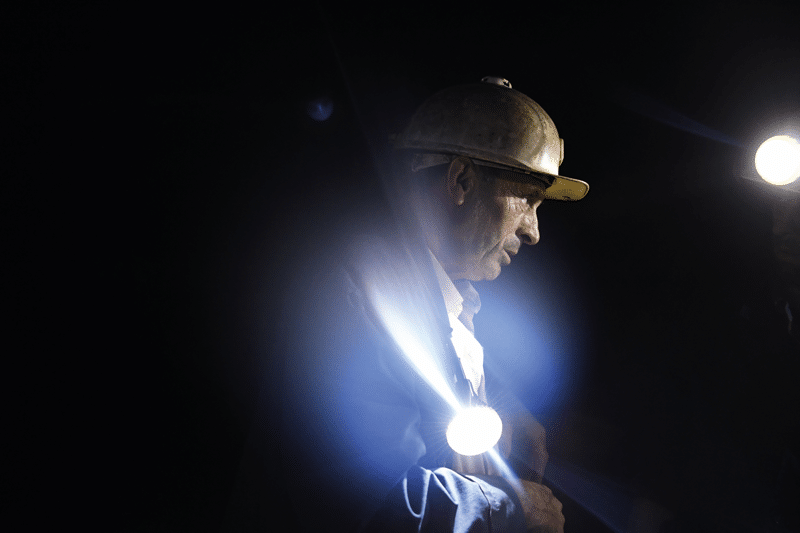
Ramadan Gjoshaj, one of the final 50 strikers in 1989, our guide to Stari Trg in October 2016. Photo: James Hill
When the strikers emerged after their eight days underground, Gjoshaj was arrested and interrogated. “It was worse than you can imagine,” he recalls. “I was mentally and physically exhausted, in the police station, being interviewed. It was happening not just here but all over Yugoslavia.” For Gjoshaj and other Kosovar Albanians, their treatment – and Miloševic’s declaration of martial law just hours before he and his 49 fellow miners ended their strike – was the moment they realised Yugoslavia could not be saved.
Yet Gjoshaj returned to the mine in 1999, and even went on strike again. In January 2015 the miners of Trepca stayed underground for two days in support of efforts by politicians in Priština to nationalise the mine. The move had been held up by angry opposition in Belgrade. But 18 months later, Trepca was finally nationalised.
On 7th October 2016 the legislation to nationalise Trepca was rammed through Kosovo’s parliament with less than a day for its MPs to examine its contents. It was a politically explosive step. “This mining complex is vital for the survival of Serbs in the north of Kosovo… For us, this decision is null and void,” Serbian prime minister Aleksandar Vucic said in a press conference after the move was announced. “We will not let the Albanians do this.”
The new law has raised some major questions, complicated as it is by the massive debts Trepca accrued during its period of management from Belgrade in the 1990s. As the Yugoslav Wars drained the country’s coffers, Miloševic appointed party apparatchiks to lead Trepca. They turned the company into a socially owned enterprise and took huge loans out against the mines’ future production.
As a result, no one really knows who owns what or, more importantly, who owes what. Kosovo’s government, which declared independence in 2008 and nominally has control of the whole territory, argued that it couldn’t find any proof of debt. Besides, it claims, any debt was the responsibility of Belgrade and Miloševic, who died in The Hague in 2006 where he was being tried for war crimes.
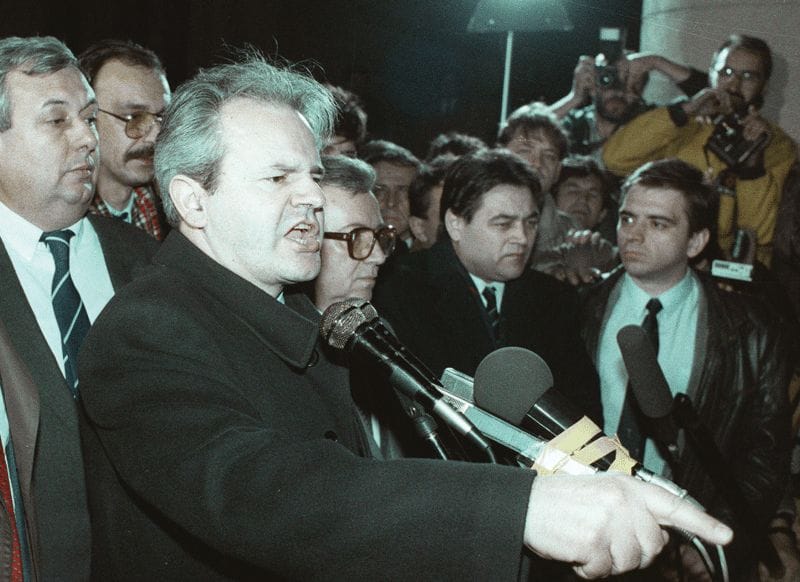
Serbian president Slobodan Miloševic speaks in Belgrade, February 1989. Photo: Martin Cleaver / AP / PA Images
As Tina Kaidanow, who would become America’s first official ambassador to Kosovo, put it in a 2007 US diplomatic cable released by WikiLeaks: “Many in the Kosovo government strongly believe that some of the debts are for money that was diverted to Belgrade’s war chest and Swiss bank accounts rather than being invested in Trepca, and for that reason are loath to repay them, at least without further litigation.”
The Serbian government says that it rightfully owns 75 percent of the mine from the days it was a socially owned enterprise, and that it poured millions of dinars of investment into Trepca over the years before the war, a claim rejected by Jashari. “Vucic says Kosovo is part of Serbia but the rest of the world knows it is not,” he says. “There are rumours that Miloševic got loans against Trepca. But with the loans they got, there was no investment we could see.” When Jashari returned as director in 1999, ten years after being fired, and once the fighting had stopped, the mines were in disrepair. They were flooded, he says, and much of the expensive heavy machinery was gone. “I know what I left behind when they fired me in 1989, and I know what I found when I came back,” he says. “I was one of the first that came back. There was no investment. The money they took in loans, they didn’t spend it in Trepca. So, we have loans used to buy munitions, to kill us, and now we would have to pay back these loans? It’s insane.”
After the Kosovo War, the miners came to be seen as heroes and have ever since enjoyed an elevated, revered status in Kosovo. In 2014, the Kosovo government raised pensions across the country by 25 per cent, but by 50 per cent for Trepca’s ex-miners. Paying this inflated bill will be one of the myriad problems that Trepca faces if it is to become a viable and substantial business once again. It is estimated that the mines need at least $30 million to upgrade the machinery to allow the complex to work at a capacity to make profit – money which could only come from foreign investment. One Serbian politician puts that figure at closer to $650 million.
The uncertainty of the ownership structure, the debts and the potential for political instability means that any outside investment has been deemed too high risk so far. The confusion is such that even nailing down a definition of what Trepca is seems to be tough. “This was the biggest question of all, for as long as I worked there, I tried to understand this myself: what is Trepca?” says Andrea Lorenzo Capussela, who was head of the economic department of the International Civilian Office in Kosovo, an EU body that supervised Kosovo’s transition towards self-sufficiency between 2008 and 2011. “It is a conglomerate – the legal entity is 2,000 to 3,000 enterprises. It is also a welfare programme. The strike has political and historical importance and the miners of Trepca are the aristocracy of Kosovo’s working class with generous pensions and stipends for workers who do not work.”
The truth is, if the Norwegian government was in charge of Trepca it would be solved within a year”
Capussela believes that when all of Trepca’s liabilities are added together, including foreign and Serbian debt, plus the environmental cost of cleaning up what can be a very messy business, Trepca is effectively bankrupt. “It is not enough to say: ‘These are Miloševic’s debts.’ The debts were for goods, services and money for Trepca,” he says. “With commercial debts it is not enough to wave them aside and say they have been taken by Miloševic for bad reasons. At some point they have to look through all the creditor claims, contest those they have reason to, and pay the ones they can. They will go to court and there will be a trial and that will decide if the debt is payable or not. Commercial creditors need to be paid.”
Capussela believes that the nationalisation of Trepca is a disaster for Kosovo’s future as it is likely to put off international investors in other areas of the economy. When the law was announced, he wrote a scathing editorial in local newspaper Priština Insight about the management of the Trepca issue. He received an equally scathing reply from several Kosovar economists and government ministers. “The truth is,” he says, “if the Norwegian government was in charge of Trepca it would be solved within a year.”
At the end of the shift, the lift once again fills with miners, now streaked in dirt. These men are the lucky few. As Bujar Mustafa, one of the few younger miners, explains: “I’m very happy to have such a job because of the high unemployment [in Kosovo] but also because it is long term with long contracts. The income might not be what we want but we don’t complain.”
For both sides in the dispute between Belgrade and Priština, Trepca is seen as the key to unlocking the potential of their people. Its shafts and seams criss-cross under land claimed by both Serbs and Kosovar Albanians, making separation just as hard as coexistence. The election of Donald Trump as US president has revived dreams among Serbian nationalists that Kosovo will return to Serbia. Murals of Trump and Russian president Vladimir Putin – a staunch Serbian ally who is loved in Belgrade – adorn dozens of walls in North Mitrovica.
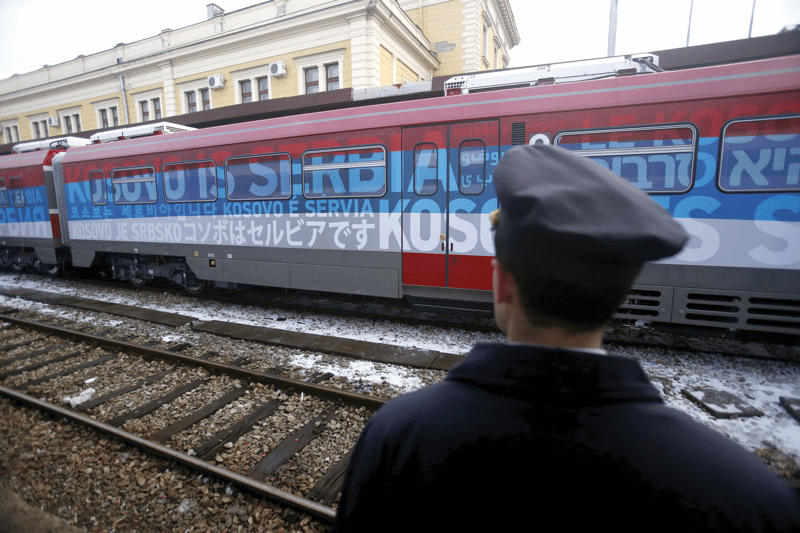
The train emblazoned with the words “Kosovo is Serbia” departs Belgrade, 14th January 2017. Photo: Darko Vojinovic / AP / PA Images
And the situation is unlikely to improve soon, thanks to a series of recent incidents around Mitrovica. First, in December 2016, a wall, which the Serbs claim was a temporary construction, was built on the Serbian side of the main bridge, next to the Ibar River. Then in January 2017, a train covered in nationalistic and religious slogans – “Kosovo is Serbia” being the most prominent – attempted to travel from Belgrade to the north of Mitrovica, sparking a diplomatic crisis. It was eventually stopped before the border. But the incident saw Serbia’s tabloid newspapers predict the return of “Rat”: “War” in Serbian.
The threat of war seems both far away and oppressively close, one kilometre down the Stari Trg mine. Given all the trouble and the two sides’ seemingly irreconcilable differences over Trepca, I ask Gjoshaj: is this mineral wealth a gift or a curse? He answers without hesitation. “We think we are blessed to have Trepca, and all the families who have men who work in the mine believe they are blessed,” he says, before the lift brings us back to the surface and the light. “It is like a saint. Something we need to take care of. It brings us life.”
Additional reporting by Xili Ismaili
Slow Journalism in your inbox, plus infographics, offers and more: sign up for the free DG newsletter. Sign me up
Thanks for signing up.
